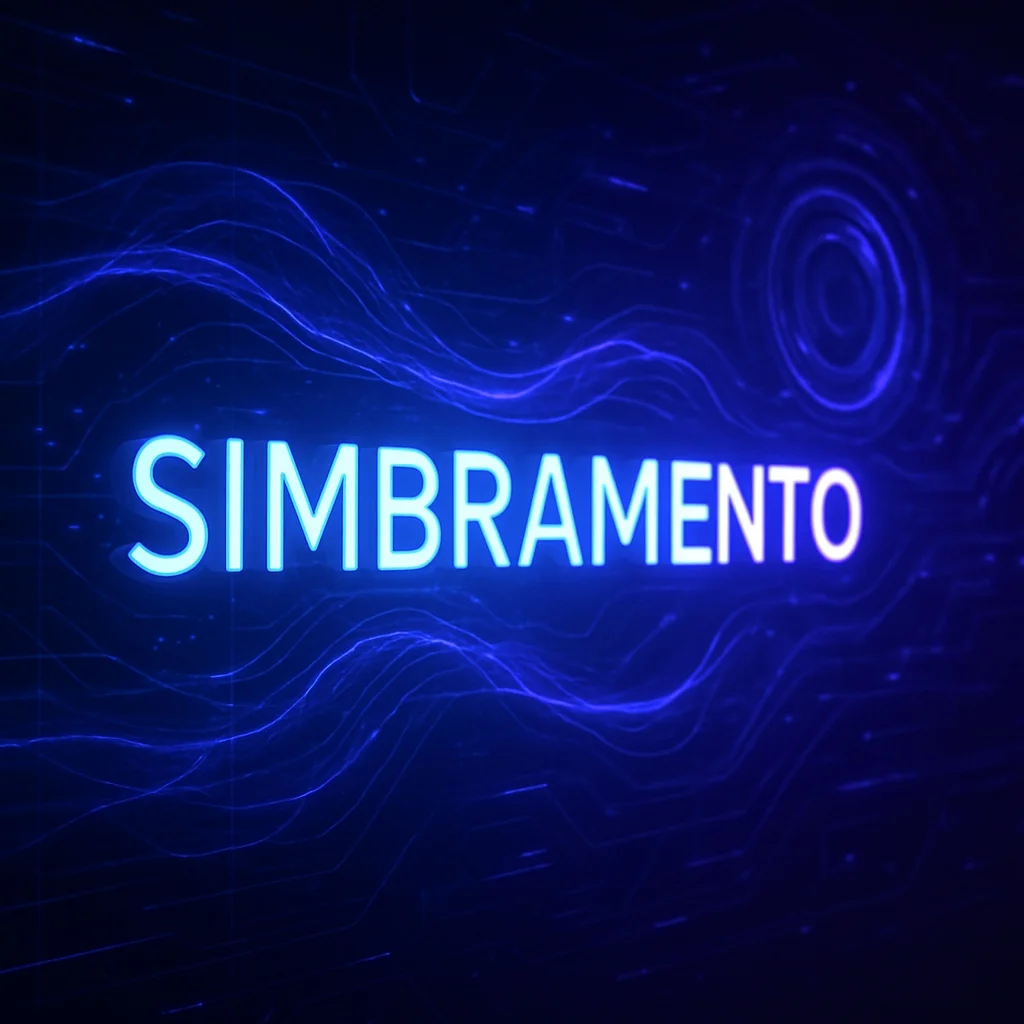In a world where the boundaries between imagination and reality blur with every brushstroke, “Simbramento” emerges as an exhilarating movement that invites artists to explore uncharted territories of creativity. Picture a realm where whimsical landscapes collide with stark urban environments, mythical creatures roam alongside everyday life, and dreams manifest on canvas like never before. This blog post delves into the heart of Simbramento—an artistic movement that challenges our perceptions and awakens our senses. Join us as we unveil innovative techniques and inspiring stories from creators who are masterfully weaving fantasy into the fabric of reality, transforming not just their art but also how we engage with the world around us. Get ready to embark on a visual journey that celebrates both the surreal wonders of imagination and the profound beauty found in everyday existence!
Introduction to Simbramento and its concept
Step into a realm where imagination dances with reality—welcome to the world of Simbramento. This groundbreaking art movement captivates viewers by intertwining fantastical elements with everyday life, creating a mesmerizing tapestry that challenges our perception of what is real and what is not. In an age where the boundaries between fact and fiction are increasingly blurred, artists harness Simbramento to evoke emotion and provoke thought. Join us as we embark on a journey through this innovative concept, exploring its origins, evolution, and impact on contemporary art. Prepare to be inspired by how these creative minds invite us to see the world through a different lens!
The origins of Simbramento and its evolution in art
Simbramento traces its roots to the early 20th century, emerging as a reaction against traditional artistic norms. Artists began experimenting with blending reality and imagination, inspired by the movements of surrealism and expressionism.
Throughout the decades, this concept has evolved. It gained traction during the postmodern art movement when creators sought innovative ways to challenge perceptions. The rise of digital technology also played a significant role in shaping Simbramento, enabling new media that could seamlessly merge fantasy with real-world elements.
Today, artists utilize a diverse range of tools—from painting and sculpture to virtual reality—to create immersive experiences that captivate their audiences. This evolution reflects not just changes in technique but shifts in cultural perspectives on art itself. As boundaries continue to blur, Simbramento stands at the forefront of artistic exploration.
How Simbramento blurs the line between fantasy and reality in art
Simbramento creates a captivating interplay between fantasy and reality. It invites viewers to question what they see, merging the tangible with the surreal.
Through vivid imagery and imaginative concepts, artists craft worlds where the ordinary coexists with the extraordinary. This fusion challenges perceptions, encouraging audiences to explore deeper meanings hidden beneath visual layers.
In Simbramento, realism serves as a foundation for fantasy’s whimsical elements. Artists often utilize familiar settings or objects, infusing them with dreamlike qualities. Shadows morph into creatures; landscapes twist into realms of wonder.
Such techniques cultivate emotional responses that resonate on multiple levels. Viewers find themselves lost in these hybrid spaces—curiosity piqued by bizarre juxtapositions and enchanting narratives.
The art becomes not just an object but an experience—a portal inviting exploration beyond conventional boundaries of perception and imagination.
Examples of artists using Simbramento in their work
Artists are exploring Simbramento in fascinating ways, blending imagined realms with tangible reality. Take, for instance, the work of Anya Moryoussef. Her vibrant landscapes invite viewers to step into dreamlike settings that feel both familiar and otherworldly.
Another notable figure is Marcus Lutz, who creates immersive installations that blend digital art with physical spaces. His pieces often incorporate augmented reality elements, allowing audiences to experience layers of fantasy overlaid on their everyday environment.
Then there’s Elara Cruz, whose mixed media portraits capture fleeting moments between dreams and consciousness. The delicate balance she strikes evokes emotion while challenging perceptions of identity and existence.
These artists demonstrate how Simbramento can transcend traditional artistic boundaries. Their works spark curiosity and dialogue about what it means to merge the fantastical with the real. Each piece invites us to reconsider our relationship with both worlds.
Techniques for incorporating Simbramento into your own art
To incorporate Simbramento into your art, start by blending contrasting elements. Use vibrant colors alongside muted tones to evoke a range of emotions. This interplay can create intriguing visual tension.
Experiment with mixed media techniques. Layer traditional painting with digital enhancements or collage elements. This fusion highlights the connection between reality and fantasy.
Consider perspective shifts in your work. Play with scale and proportions to challenge viewers’ perceptions of space and depth. A small figure in a vast landscape can spark curiosity about their story.
Incorporate dreamlike qualities by using surreal motifs or unexpected juxtapositions. Familiar scenes transformed into otherworldly visions invite engagement and contemplation.
Lastly, embrace spontaneity as you create. Allow intuition to guide your brush strokes or choices of materials—this unpredictability is at the heart of Simbramento’s charm.
You Might Also Like: Uvlack
The impact of Simbramento on the art world and its reception by audiences
Simbramento has sparked a fascinating dialogue within the art community. By blending fantasy and reality, it challenges traditional perceptions of artistic boundaries. Audiences find themselves immersed in experiences that challenge the distinction between what is real and what is imagined.
This innovative style captivates viewers, drawing them into worlds they may never have considered before. The emotional responses elicited are varied—some feel wonder while others experience discomfort. This duality keeps conversations around Simbramento alive.
Artists embracing this approach often receive mixed reactions from critics and fans alike. Some laud its daring creativity, while others argue it strays too far from conventional techniques. Yet, these debates only fuel interest in the movement.
As exhibitions featuring Simbramento gain traction, more people are exposed to its unique charm. Galleries are now filled with pieces that invite interaction and contemplation, transforming the way art is experienced today.
Challenges and controversies surrounding Simbramento
Simbramento, while innovative, has not escaped criticism. Some purists argue that this blending of fantasy and reality dilutes traditional artistic values. They feel it can overshadow skillful craftsmanship in favor of conceptual ideas.
Moreover, the ambiguity inherent in Simbramento raises questions about authenticity. What constitutes art when boundaries are blurred? This debate often leads to polarized opinions among critics and enthusiasts alike.
Additionally, there’s a risk of misinterpretation. Viewers might perceive a piece through their own biases rather than understanding the artist’s intention. Such misunderstandings can spark heated discussions within the art community.
The commercialization of Simbramento also poses challenges. As artists explore its potential for profit, some worry that integrity might be compromised in pursuit of marketability or trends. Balancing creativity with commercial success remains a delicate tightrope walk for many creators navigating this landscape.
The future of Simbramento in art and its potential for pushing creative boundaries
The future of Simbramento in art holds immense promise. As technology advances, artists are increasingly equipped to blend virtual and physical realms. This fusion creates a rich palette for imaginative expression.
Augmented reality, for instance, is pushing boundaries like never before. Artists can now overlay fantastical elements onto real-world settings. Viewers become participants in an evolving narrative that transcends traditional experiences.
Moreover, emerging media will continue to challenge perceptions. Digital installations can morph based on audience interaction or time of day. This interactivity makes every encounter unique and personal.
Collaborations across disciplines will also flourish. Musicians, writers, and visual artists are likely to unite their talents through Simbramento principles.
As we look ahead, the movement invites creators to explore uncharted territories within their work, while blurring the lines between what is real and what is imaginary. The possibilities seem endless.
Conclusion: Embracing the limitless possibilities of Simbramento in art.
The journey through Simbramento reveals a fascinating tapestry of innovation in the art world. This unique movement invites artists and audiences alike to explore the intricate dance between fantasy and reality. As we’ve seen, its origins are steeped in rich history, evolving continuously to challenge traditional boundaries.
Artists embracing Simbramento employ diverse techniques that not only captivate viewers but also provoke thought about what is possible within their creative expression. They blur lines, merge narratives, and elevate visuals in ways that resonate deeply with our imaginations.
As more creators delve into this realm, we witness an artistic evolution that holds promise for new experiences. The challenges and controversies surrounding Simbramento are part of its charm; they stir dialogue and push us to reconsider our perceptions of art itself.
With technology advancing at breakneck speed and societal norms shifting constantly, the future of Simbramento seems bright. Its potential for pushing creative boundaries opens doors to limitless possibilities, inviting everyone to participate in this extraordinary exploration. Embrace it!

